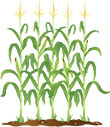With schools and large restaurants closed, demand plummeted among restaurant and dining outlets, while demand in grocery retailers went through the roof.
All of these dynamics played havoc on the cow-calf producer and feeder. Slower chain speeds in plants led to a longer wait to process cattle – and heavier weights on those finished fat cattle.
The result was downward pressure on livestock prices through much of the year, both on cash cattle and cattle futures. At one point during the slowdown, President Donald Trump was lobbying for Justice Department investigations into price discovery.
The volatility has led to more lobbying for intervention on price discovery. Models included ideas such as the Canadian “set-aside” program and also congressional bills to require packers to secure 50% of livestock through cash markets.
 COVID-19 hits workers in meat-packing plants
COVID-19 hits workers in meat-packing plants
The coronavirus outbreak in March had a direct effect on meat processing facilities across the country, as packing plant workers began contracting the virus. Dozens of plants across the country saw closures due to COVID-19 spread. Officials in several states traced hot spots directly to towns with packing plants. Many closures hit in the month of April, leading to a severe pinch on beef and pork processing.
Trump issued an executive order in April making packing plant employees “essential workers,” but many workers still were reluctant to report until conditions were improved by plants.
Data collected by the Food & Environment Reporting Network showed at least 536 meat-packing plants had confirmed COVID-19 cases, affecting 48,398 workers; at least 239 meat-packing plant workers died from the virus as of Oct. 20.
 Export picture takes a drop in 2020
Export picture takes a drop in 2020
The beef export picture hit 183 million pounds in June 2020, the lowest level seen since May 2009 when volume was 173 million pounds. The year-over-year drop was a significant blow to a cattle industry looking for positive ground in the export market before COVID-19 began its spread. Japan, the top trading partner for the U.S. in total volume, dropped 20% in June while South Korea, the third-largest destination for U.S. beef, imported 30% less product in that month, while Mexico saw 61% less product than 2019.
 Big four meatpackers face antitrust investigation
Big four meatpackers face antitrust investigation
The beef industry’s four largest meat-packing companies were under fire earlier this year when potential antitrust concerns were made by state officials. The U.S. Department of Justice (DOJ) ordered Tyson Foods Inc., JBS SA, Cargill Inc. and National Beef Inc. to provide information as part of an ongoing probe related to competition before and during the COVID-19 crisis.
Highly consolidated, these four companies control more than 80% of the U.S. beef processing market. Their dominance has created longstanding concerns regarding their pricing power over livestock producers, which only heightened during COVID-19-related plant closures and the resulting bottleneck in the cattle industry.
This antitrust inquiry is separate from the USDA investigation on the violation of the Packers and Stockyard Act, which stretched back to last year’s Tyson Holcomb fire. At the time of writing, both investigations are ongoing.

 Industry events go virtual
Industry events go virtual
Virtual conferences became a staple in 2020, with big events such as the National Angus Convention, Texas Southwestern Cattle Raisers Association (TSCRA) Convention, Beef Improvement Federation (BIF) Research Symposium, American Association of Bovine Practitioners (AABP) Conference, Texas A&M Beef Cattle Short Course and more canceling their in-person events and opting for non-traditional teleconferences.
Other big industry events such as the Houston Livestock Show and Rodeo, which closed its doors in the middle of the event, and the National Western Stock Show and Rodeo were canceled. The National Western Stock Show and Rodeo plans to resume January 2022. The National Cattlemen’s Beef Association’s annual convention and trade show, originally scheduled for February 2021, has been moved to August 2021, still taking place in Nashville, Tennessee.
 2020 corn harvest falls short of expectations
2020 corn harvest falls short of expectations
Taking into account both the 2019 and 2020 corn crops, production was a combined 2 billion bushels lighter than most predictions called for prior to the respective growing seasons. The USDA estimated 2020 corn plantings at 91 million acres, a whopping 6 million fewer acres than indicated in March.
In 2019, the extreme wet conditions of the planting season greatly curtailed the acres planted. Early in 2020, it was expected U.S. farmers would plant the largest corn area in eight years. Those plans were unceremoniously canceled with the advent of the COVID-19 pandemic and the subsequent crash of grain prices to historic lows.
The lower-than-expected corn supply, with the potential for increased feed prices due to higher demand pressure on a more limited supply, is another blow to a beleaguered cattle feeding industry already reeling from the major supply chain disruptions caused by the pandemic and last year’s Tyson processing plant fire.
 Fires in the Western states
Fires in the Western states
According to the National Interagency Fire Center, as of the first week of November, nearly 8.6 million acres in the western U.S. have been scorched by 47,506 fires. This, compared to the 10-year average of 6.4 million acres, proves that 2020 has been one of the worst fire years on record.
While hundreds of thousands of people have been personally and tragically affected, perhaps none have suffered more devastating effects than those ranchers whose entire homes and livelihoods were obliterated. Wildfires in California and Oregon seemed to attract most of the attention nationally, but the destruction was no less significant to ranchers in Utah, Idaho, Colorado, Washington and Wyoming.
From climate change to improper forest and rangeland management, the causes and blame are many and varied. Western ranchers have been able to take heart, however, in the increased positive attention directed to the use of grazing as an effective management tool in wildfire control and management.
 CFAP program distributes more than $19 billion to producers
CFAP program distributes more than $19 billion to producers
In May, the USDA launched the Coronavirus Food Assistance Program (CFAP), which pledged up to $19 billion to aid farmers and ranchers impacted by the COVID-19 pandemic. CFAP included $3 billion for direct food purchases and redistribution through food banks throughout the country and $16 billion for direct financial support to agricultural producers. That support was based on how hard the coronavirus hit that market, based on one of two indicators: a 5% or greater decline in price between Jan. 15, 2020, and April 15, 2020, or losses due to supply chain disruptions from COVID-19. The application period for CFAP aid opened May 26 and closed Sept. 11 in most states.
A second wave of funding, CFAP 2.0, was announced in September. Through CFAP 2.0, $14 billion is available for agricultural producers who continue to face market disruptions and associated costs because of COVID-19. As of the deadline for this publication, $8.8 billion has been distributed through CFAP 2.0. Enrollment for CFAP 2.0 opened Sept. 21 and will close Dec. 11, 2020.
 Advisory committee deliberates on 2020-25 federal dietary guidelines
Advisory committee deliberates on 2020-25 federal dietary guidelines
2020 was an important year for federal dietary policy. A committee of 20 nationally recognized nutrition and health experts, appointed by the USDA and the Department of Health and Human Services, conducted a scientific review of the 2015-20 Dietary Guidelines for Americans and deliberated on proposed updates and changes, hearing testimony from numerous experts for or against the proposals. The draft of the review was open for public comment until June 20. The official 2020-25 Dietary Guidelines for Americans will be released by the end of the year.
The dietary guidelines have a far-reaching impact on the beef industry. Doctors, nutritionists, dieticians and other health professionals use them to make nutrition recommendations, and all government nutrition assistance programs – including the school lunch program, Women, Infants and Children (WIC) and Supplemental Nutrition Assistance Program (SNAP) – are based on the dietary guidelines. The guidelines also direct FDA regulation on food packaging and labeling.
 Gray wolves removed from ESA protection
Gray wolves removed from ESA protection
In late October, officials from the U.S. Fish and Wildlife Service announced the successful recovery of the gray wolf and its delisting from the Endangered Species Act (ESA).
U.S. Secretary of the Interior David L. Bernhardt announced that state and tribal wildlife management agency professionals will resume responsibility for sustainable management and protection of delisted gray wolves in states with gray wolf populations, while the U.S. Fish and Wildlife Service (FWS) will monitor the species for five years to ensure the continued success of the species.
In total, the gray wolf population in the lower 48 states is more than 6,000 wolves, greatly exceeding the combined recovery goals for the Northern Rocky Mountains and Western Great Lakes populations. ![]()
—Compiled by Progressive Cattle staff







